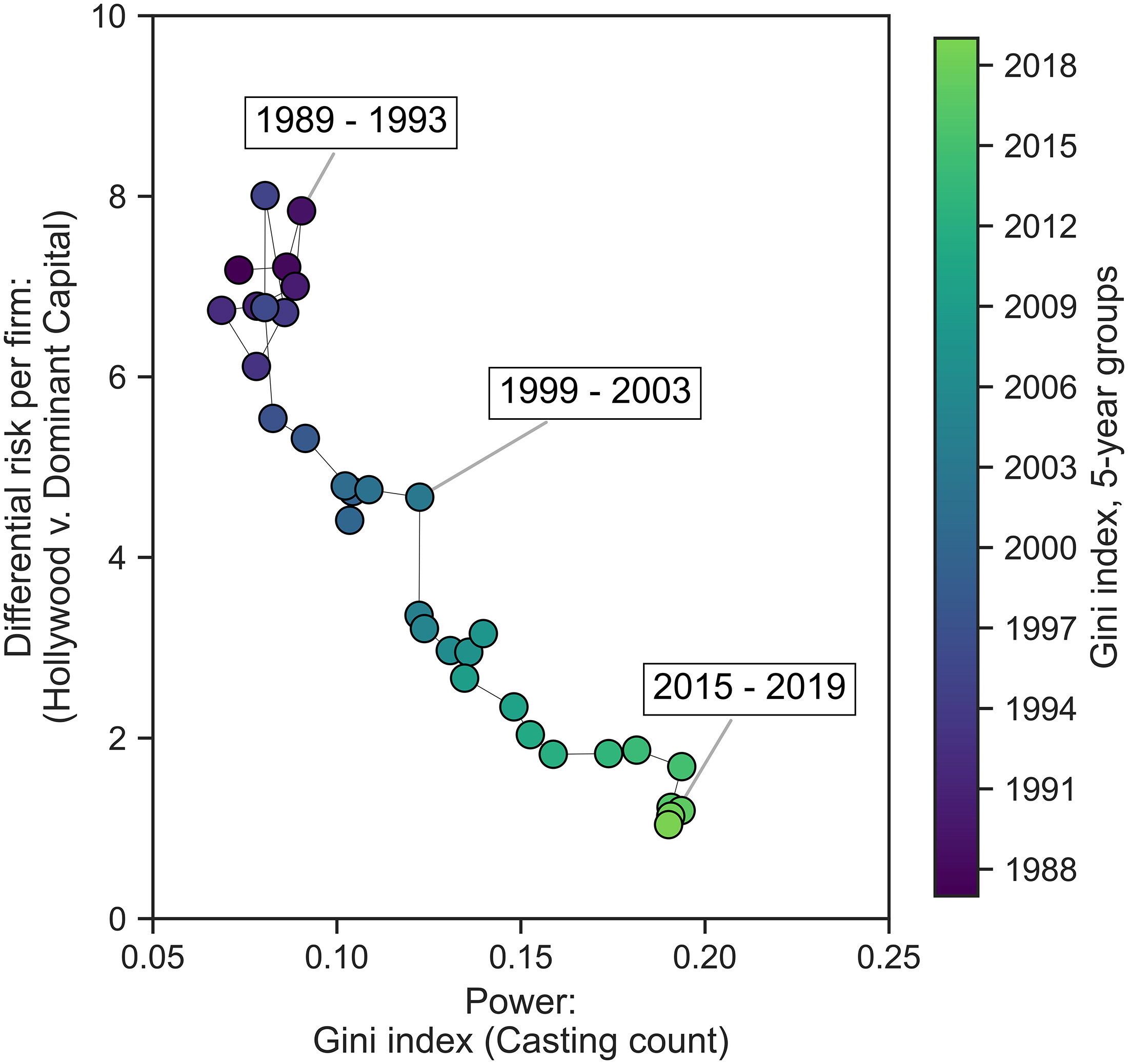
McMahon, ‘Star Power and Risk: A Political Economic Study of Casting Trends in Hollywood’
May 30, 2023
Abstract
This paper builds an empirical and theoretical model to analyze how the financial goal of risk reduction changed the insides of Hollywood’s star system. For the moviegoer looking at Hollywood cinema from the outside, the function of the star system has remained the same since the 1920s: to have recognizable actors attract large audiences to Hollywood’s biggest and most expensive productions. The composition of this system is, however, sensitive to many historical changes in the business and culture of cinema. From year to year or film to film, there is neither a stable set of movie stars, nor a timeless logic for deciding how one should cast some actors over others. So how do Hollywood insiders make these decisions?
If the evolution of Hollywood’s star system is shaped by broader social factors, risk reduction would be a key factor after 1980. The financial history of Hollywood shows a systemic process of risk reduction that began in the early 1980s and continues into the present (McMahon 2013, 2019). Risk reduction was achieved by Hollywood studios making the wide-release strategy (a.k.a., saturation booking) more predictable through an aggressive implementation of the blockbuster style and the high concept standard (McMahon 2022; Wyatt 1994).
This paper uses Internet Movie Database (IMDb) casting data to analyze how the star system from 1980 to 2019 was a component in this push to reduce risk. Risk reduction shapes film casting when a star system is built on controlled repetition. Repetitive casting—choosing the same people to star in a series of films—is a form of control because the repetitive selection is the inequality of opportunity by another name: if an in-group is internally repetitive when alternatives exist, an out-group is repeatedly excluded.
There are two key conclusions to the analysis of the IMDb dataset. First, casting repetitiveness/inequality in the blockbuster era of Hollywood (1980–present) is low compared to Hollywood’s “classical” studio system (1930–1948). High repetitiveness/inequality during the first half of the twentieth century is consistent with existing research on the studio system; during the studio system, Hollywood had, among other strategies, a preference to cast people on multi-year contracts (Schatz 2010). Second, the historically low levels of repetitiveness/inequality after 1980 can be misleading if we ignore sector characteristics such as firm size and level of theatrical distribution. While it appears that there are fewer barriers to being cast in any American film, a long career in the upper echelons of blockbuster Hollywood is still reserved for Hollywood’s elite. Whether measured by the size of distributor or number of opening theaters in theatrical release, blockbuster cinema increasingly relies on more repetitive casting.
Citation
Star Power and Risk: A Political Economic Study of Casting Trends in Hollywood
McMahon, James. (2023) Quarterly Review of Film and Video. May. pp 1-34. https://doi.org/10.1080/10509208.2023.2215355
